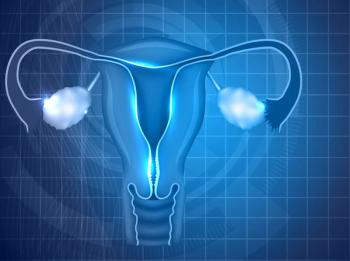
Cervical Cancer Mortality Higher Than Once Thought
A study out of Johns Hopkins Bloomberg School of Public Health published results of a study evaluating the United States mortality rate associated with cervical cancer and what they found is concerning, especially for older and black women.1
It was discussed within their findings that the mortality rate for black women with cervical cancer is 77% higher than once reported and for white women, the rates are elevated as well, and are noted to experience a 47% higher mortality rate.
So, why the dramatic change and jump in mortality?
These calculated rates are reflective of excluding women who have undergone hysterectomies; therefore, decreasing the population at risk for developing the disease, thus the increase in mortality due to a more concentrated demographic.
The researchers point out one very interesting fact-the women who are dying of cervical cancer are over age 65. Current Pap smear guidelines do not recommend testing for cervical cancer in women over 65 and thus a large population of women at risk may be missed.
The American Cancer Society (ACS), American Society for Colposcopy and Cervical Pathology (ASCCP), and American Society for Clinical Pathology (ASCP) recommend stopping routine Pap smear testing over 65 “with adequate negative prior screening and no history of CIN2 or higher within the last 20 years. Adequate negative prior screening results are defined as three consecutive negative cytology results or two consecutive negative co-test results within the previous 10 years, with the most recent test performed within the past 5 years.” Additionally, they note that even after cessation of screening in the setting of a new sexual partner, resumption of cervical cancer screening is not recommended.2
Anne F. Rositch, PhD, MSPH, an assistant professor in the Department of Epidemiology at the Bloomberg School states that, “These data tell us that as long as a woman retains her cervix, it is important that she continue to obtain recommended screening for cervical cancer since the risk of death from the disease remains significant well into older age.”1
The fact that women who have had prior hysterectomies have been removed from mortality statistics, is providing researchers with a more comprehensive view of the impact cervical cancer is still having on women, specifically black women. Due to the increased incidence of fibroids in black women, many have ultimately undergone a hysterectomy as part of their treatment plan.1 Their findings note that prior to elimination of women with hysterectomy, black women over the age of 20 experienced a 5.7 per 100,000 annual mortality rate from cervical cancer, which nearly doubled to 10.1 per 100,000 after recalculation removing women with hysterectomy. The rate in white women increased from 3.2 per 100,000 to 4.7 per 100,000.1, 3
The worst disparity was found in older black women (over 85) who experienced a 37.2 death rate per 100,000 from cervical cancer in the United States.3
Rositch further explains that, “While trends over time show that the racial disparities gap has been closing somewhat, these data emphasize that it should remain a priority area. Black women are dying of cervical cancer at twice the rate as white women in the United States and we need to put in place measures to reverse the trend.”1
More research is clearly needed in this area to further evaluate the best methods to adequately screen and treat women at risk for developing cervical cancer.
References:
1. Johns Hopkins Bloomberg School of Public Health. Cervical Cancer Death Rates Higher Among Older and Black Women. 2017 Jan 23.
2. Centers for Disease Control and Prevention. Cervical Cancer Screening Guidelines for Average-Risk Women.
3. Beavis AL, Gravitt PE, Rositch AF. Hysterectomy-corrected cervical cancer mortality rates reveal a larger racial disparity in the United States. Cancer. 2017 Jan 23
Newsletter
Stay up to date on recent advances in the multidisciplinary approach to cancer.

















































































